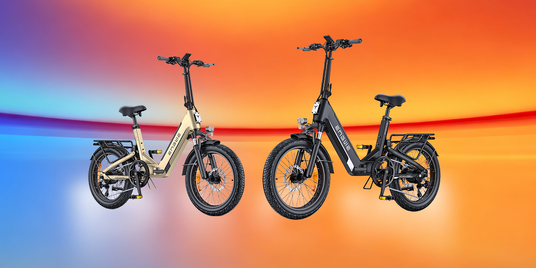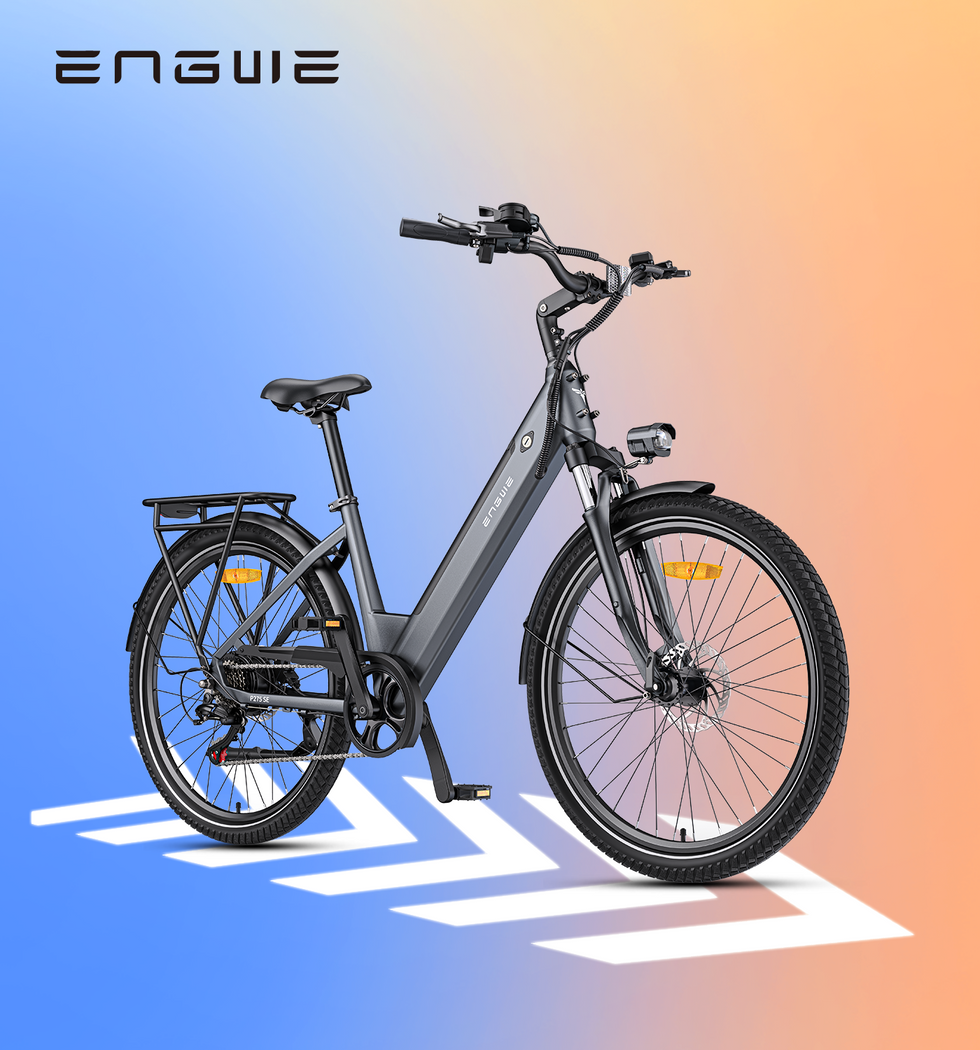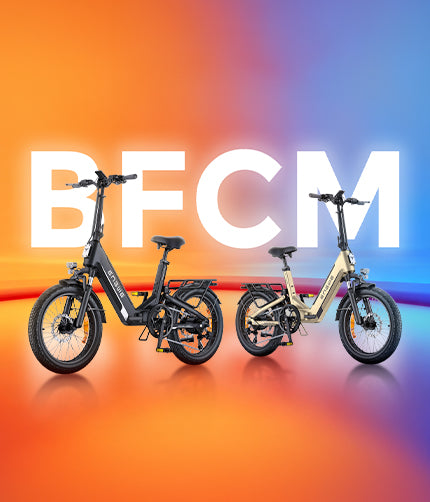It can seem a little daunting to try and find the right folding fat tire electric bike under $1500, but it is definitely possible. This amount is more than enough to be able to find numerous decent models that offer the perfect mix of power, portability, and “luxury” features without causing one to rob a bank to be able to afford them. Various dimensions shape the purchase decision, such as premium features from a reputable brand, core performance metrics of the powertrain, portability and general build quality, ride comfort and terrain versatility, and other value-added features that are essential to its selection. This guide will help you make sense of the five most critical dimensions to consider and land the best possible purchase for your money.
Premium Features from a Reputable Brand

First and foremost, you may want to consider one of the best value leaders – a brand that combines premium technology with an accessible package. One such is ENGWE, which stands out for continuously producing high-spec electric bikes that defy the market. Their vision of innovation is well-reflected by the ENGWE L20 3.0 Pro, which defies the standard of what a compact e-bike should be: geared towards performance and comfort for urban riding. Here is why it should be your first choice:

- One-of-a-kind powertrain. Unlike anything on the market, it comes equipped with a high-performance 250W Mivice mid-drive motor. The mid-drive is superior to common hub solutions because it transmits power directly to the drivetrain. As a result, the power assist feels much more natural and is also far more efficient, especially on hills. Boasting 100Nm of torque, the motor will get you up any incline regardless of your weight.
- Unrivaled comfort. The ENGWE L20 3.0 Pro is the first compact e-bike to offer a full-suspension system. With a front hydraulic fork and 30mm of rear travel, it can absorb up to 90% of road terrain vibrations, making bumpy city streets unnoticeable.
- Exceptional range and charging. The massive 720Wh Samsung battery offers an impressive range of up to 160km and supports 8A fast charging, significantly reducing downtime between trips.
- Smart security. It comes with an integrated ENGWE IoT module that offers the most advanced anti-theft protection using GPS tracking, 4G connectivity, and in-app notifications.
- Premium components. It features a torque sensor for intuitive pedal assistance, as well as lightweight and powerful dual-piston hydraulic disc brakes and puncture-resistant tires.
Core Performance Metrics of the Powertrain
Rather than any exceptional single model, know the market’s primary performance metrics. That’s your e-bike’s engine — the motor and the battery within. For under $1500, you’ll find excellent options, but you need to know what to look for. Key takeaway: Motor wattage isn’t enough; torque (Nm) lets you know how good it is at hill climbing, and you should go by the battery’s watt-hours (Wh) for actual range.
Motor Power and Type
Most vehicles will use a 500W or 750W rear hub motor, which is more than adequate for most riders and extremely long-lasting. Aim to find one with a minimum torque rating of 60 Nm if you live in a hilly area.
Battery Capacity and Range
The battery capacity (Wh) is calculated by multiplying Volts (V) by Amp-hours (Ah). You should aim for a battery of at least 600Wh to achieve a sensible real-world range of around 30–50 miles on a single charge, depending on type and terrain at a charge level.
Speed and Classification
Most folding fat tire e-bikes are Class 2, allowing a throttle and pedal assistance of up to 20 mph without modification. Many will need to be re-categorized as a Class 3 (pedal assistance of up to 28 mph) but the rules will differ according to your area.
Performance-Focused Suggestions
We recommend checking out anything from Aventon or Rad Power Bikes. These often feature big 750W motors and batteries, which contribute to excellent performance for riders that want to go as quickly as possible.

Portability and General Build Quality
Folding is probably the main reason to buy a bike like this, so portability and build quality can’t be disregarded. If it’s tough to fold or to lift, it’s useless. Pro tip: Before purchase, take a look at a video review where the folding will be shown. If it involves several steps, repeated every single day, you won’t be happy. Before payment, pay attention to the folded dimensions to see that the bike will "enter" your trunk, RV, or apartment.
Folding Mechanism
The best folding mechanisms are fast, easy to use, and simple to lock securely in place. Look for robust, simple, and secure latches on the frame near the handles and handlebar stem. A magnetic or multi-point locking system that automatically secures the bike when folded is a significant bonus.
Weight
These bikes are darn heavy. They weigh between 60-80 lbs. If you have stairs, look for the lighter, foldable bike.
Frame and Construction
All frames are made from 6061 aluminum alloy. Check if the welds look consistent and clean; check the max payload capacity and the cargo you are planning to use.
Portability-Focused Recommendations
Companies like Lectric E-Bikes and Heybike offer more compact and lightweight models, making them one of the best for multimodal commuting and people with lots of luggage.
Ride Comfort and Terrain Versatility
Every e-bike in this category is a joy to ride every day thanks to near-universal comfort and versatility. Once again, the stand-out feature is the fat tires, providing a cushioned ride that takes you from the pavement to the gravel path and out onto the sandy beach. Nonetheless, the rest of the components are equally important. Focus Point: To mitigate significant impacts, you must have a front suspension fork. For additional comfort, a suspension seatpost is still beneficial. My recommendations for this group are as follows: Regarding suspension, a front suspension fork is required, as all bikes at or above this price come with it; full-suspension models in this category are quite rare but provide unrivaled comfort. The normal 20″ x 4″ fat tires provide excellent cushioning and grip, but some bikes might opt for slightly narrower 3″ tires to make the bike feel more nimble and street-oriented. For additional cushioning, look for a tire with a puncture protection layer built in to reduce flats. Based on the frequent comfortable use of a bike in this category, a step-through frame is essential; getting on and off the bike is easy and quick. Also, the seat and handlebars on your bike should be vastly adjustable for your body. Comfort-focused recommendations: Some companies, such as Qualisports or Fiido, prioritize comfort on certain models; these include plush saddles, swept-back handlebars, and suspension seatposts to aid in the creation of a calm, upright riding posture.

Value-Added Features and Final Considerations
Finally, evaluate the value-added characteristics and general component quality, and then make a purchase with confidence. Little things can have a big effect on your everyday life. For instance, a hydraulic disc brake is preferable to a mechanical one. The table below illustrates some of the most significant distinctions using various examples. Money-saving hint: Shopping on major holidays like Black Friday or at the end of the season can help you save a lot of money. Many manufacturers provide major discounts during these times.
| Essential Feature | Model A (e.g., Aventon Sinch.2) | Model B (e.g., Rad Power RadExpand 5) | Model C (e.g., Lectric XP 3.0) |
|---|---|---|---|
| Motor | 750W Rear Hub w/ Torque Sensor | 750W Rear Hub w/ Cadence Sensor | 500W (1000W Peak) Rear Hub |
| Brakes | Hydraulic Disc | Mechanical Disc | Hydraulic Disc |
| Drivetrain | 8-Speed | 7-Speed | 7-Speed |
| Included Extras | Fenders, Rear Rack, Lights | Fenders, Rear Rack, Lights | Fenders, Rear Rack, Lights |
| Key Feature | Torque sensor for a smooth ride | Robust build, large ecosystem | Excellent value, high power output |
Braking System
This is a crucial safety characteristic. Hydraulic disc brakes have considerably more stopping power, greater modulation, and lower maintenance than mechanical disc brakes. If possible, invest in it.
Integrated Accessories
A bike with integrated headlights and taillights, fenders, and a solid rear rack has considerable built-in worth. Aftermarket purchase and installation can be a costly and troublesome process.
Display
Choose a clear, backlit LCD panel that displays the most important information: speed, battery level, odometer, and pedal-assist level. A USB port for charging your phone would be a nice touch.
Frequently Asked Questions
What is the real-world range I can expect?
Manufacturers typically claim a maximum range that you will never get close to. You should expect 50-70% of the claimed range and remember that the range is heavily affected by rider weight, terrain, wind, and how much you rely on pedal assist.
Are hydraulic brakes a necessary upgrade?
Absolutely. For a bulky fat tire e-bike that can get to 20+ mph, the stronger stopping force and controlled feel of hydraulic brakes are an essential safety feature and the most useful upgrade for every cyclist.
How important is a torque sensor versus a cadence sensor?
A cadence sensor means the motor helps you move when you begin to spin the pedals. A torque sensor is more complicated. It dynamically makes the motor contribute extra power based on how much physical work you are performing. The outcome is a much more refined, intuitive, and enjoyable experience.
Weigh these five dimensions and make your own choice.







